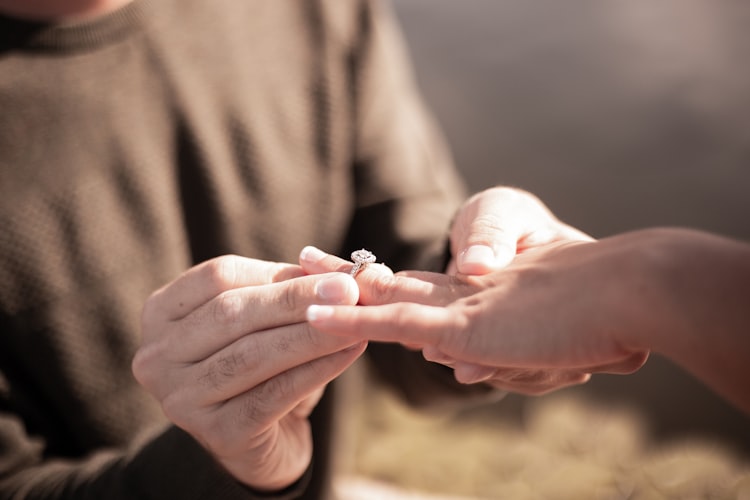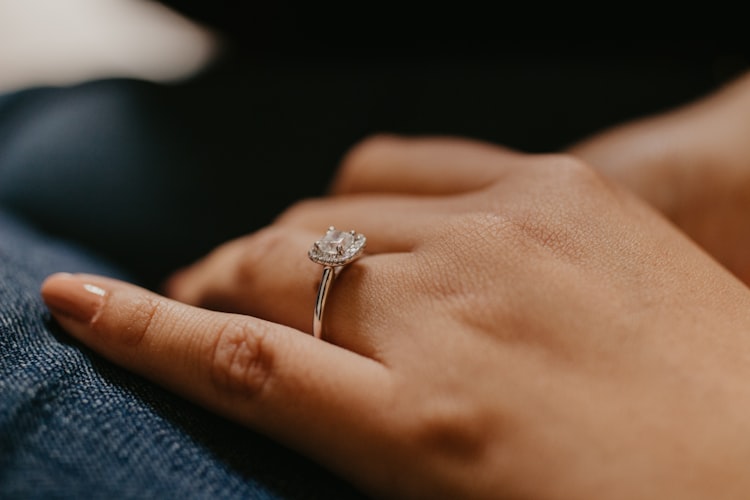
4 Tips for Buying the Perfect Engagement Ring
Coming up with the perfect engagement proposal is by no means an easy task. Besides choosing the right time and place to propose, you also have to get an awesome engagement ring. An engagement ring can come in many different forms, designs, and materials, which can make it a challenge for you to find the right ring to buy. Follow this comprehensive guide to get the perfect engagement ring for your romantic partner.
1. Understand the Four Cs

Image via Unsplash by andrejackson
The four Cs are the global standards for determining the quality of diamonds, and they can help you properly compare one diamond to another. The four Cs include:
Cut
The cut of a diamond refers to its shape and determines how well it reflects its light. It also has an effect on the price per carat. Below are a few examples of diamond cutting styles:
- Round: Round diamonds usually feature a brilliant style with an arrangement of 57 or 58 facets. In general, they're more expensive than other types of cutting styles.
- Emerald: The emerald cut is a rectangular or square shape that has beveled corners and a longer facet along each edge, which is also known as a step cut.
- Radiant: A radiant-cut diamond is also rectangular or square in shape, but it's cut in the brilliant style.
Carat Size
A diamond with a higher carat count is usually more expensive because it's rarer. However, you may be able to get a better deal if you opt for a less common carat size. Diamonds normally come in whole and half-carat weights. If you choose a diamond that's just shy of a common weight, such as 0.93 carats rather than 1 carat, you can save a significant amount of money.
Color
To choose a color grade that suits your preference and budget, you have to look at the Gemological Institute of America (GIA) diamond color grades, which include:
- D: D-color diamonds have a pure icy look. They're the highest quality and rarest among diamonds.
- G to J: Diamonds rated G to J are almost colorless. They don't have any noticeable color and provide good value for the quality.
- K: K-color diamonds are faintly colored. They're a budget-friendly option and pair well with yellow gold.
- L to Z: Diamonds in the L-to-Z range have a discernible warm yellow hue. They're the lowest-quality and most affordable diamonds.
Clarity
The clarity of a diamond refers to its lack of inclusions and blemishes. All diamonds have some form of impurity, but the closer they come to perfect clarity, the higher their value. The GIA also has a grading system for diamond clarity, which is as follows:
- Flawless (FL): FL-grade diamonds have no visible blemishes or inclusions under 10-times magnification.
- Internally Flawless (IFL): This grade is assigned to diamonds with visible blemishes but no visible inclusions under 10-times magnification.
- Very, Very Slightly Included (VVS): Diamonds rated VVS have inclusions that are so slight, they're hard for even a skilled grader to detect under 10-times magnification. The inclusions in such diamonds and those with higher clarity levels are impossible to detect with the human eye.
- Very Slightly Included (VS): The inclusions in VS-grade diamonds can be seen with some effort under 10-times magnification, but they're considered minor. They may be vaguely visible to the naked eye if they're black, located in the center of the stone, or found in an emerald-cut diamond.
- Slightly Included (SI): Diamonds with an SI rating have inclusions that are noticeable under 10-times magnification. Even without magnification, you may be able to see small dark or cloudy spots in these diamonds upon closer observation.
- Included (I): In terms of clarity, I-grade diamonds are of the lowest quality. Their inclusions are clearly visible under 10-times magnification, which can have an impact on their brilliance and transparency.
2. Select a Metal for the Band

Image via Unsplash by ksthomson12
Your choice of metal for the engagement ring's band affects the overall appearance and value of the piece. Usually, ring bands are made of one of the following metals:
- Platinum or white gold: If you want the ring to look sleek and modern, it's a good idea to opt for a platinum or white-gold band. Both of these metals pair especially well with diamonds graded D to J because they can highlight the stones' colorlessness. If you set a colorless or almost colorless diamond in a yellow band, it'll have a more yellowish appearance.
- Gold: If your partner likes gold, note that white prongs and bezels are typically integrated into gold bands to create a striking contrast with the diamond. Gold is a good option if you want the engagement ring to be more colorful and exhibit contrast.
- Rose gold: You might also consider getting a rose-gold band, which has a warm appearance. This type of band was popular from the 1930s to 1950s, and it's making a comeback. If you want to give your partner a one-of-a-kind engagement ring, you can opt for a rose-gold ring with a custom design.
3. Choose the Right Setting
In an engagement ring, the setting is the component that holds the diamond in place. Additionally, it protects the diamond from damage and highlights its beauty. The three common types of setting include:
- Prong: Prongs are narrow pieces of metal that hold and protect the diamond. They usually number four or six on an engagement ring and may come in a variety of settings, such as solitaire and cathedral.
- Bezel: A bezel is a thin metal strip that's hammered or pushed around the perimeter of the diamond. This type of setting offers excellent protection for the diamond, making it the ideal option for people with active lifestyles.
- Halo: The halo setting consists of tiny diamonds that encircle the center stone. It can make an engagement ring shine brighter and the center stone appear larger.
4. Buy Certified
An engagement ring is an expensive purchase, so you have to make sure it's worth your investment. After you've found your ideal ring, ask the jeweler if the diamond has certification from a trusted laboratory, such as the GIA or the American Gem Society. Diamonds with certification from other labs may have inflated grades, meaning their actual quality may not match their prices.
If you want to get a truly distinctive engagement ring for your special someone, take a look at the wide selection of top-quality ready-to-wear and custom rings at Unique Gold and Diamonds. Feel free to contact us if you need any assistance.



